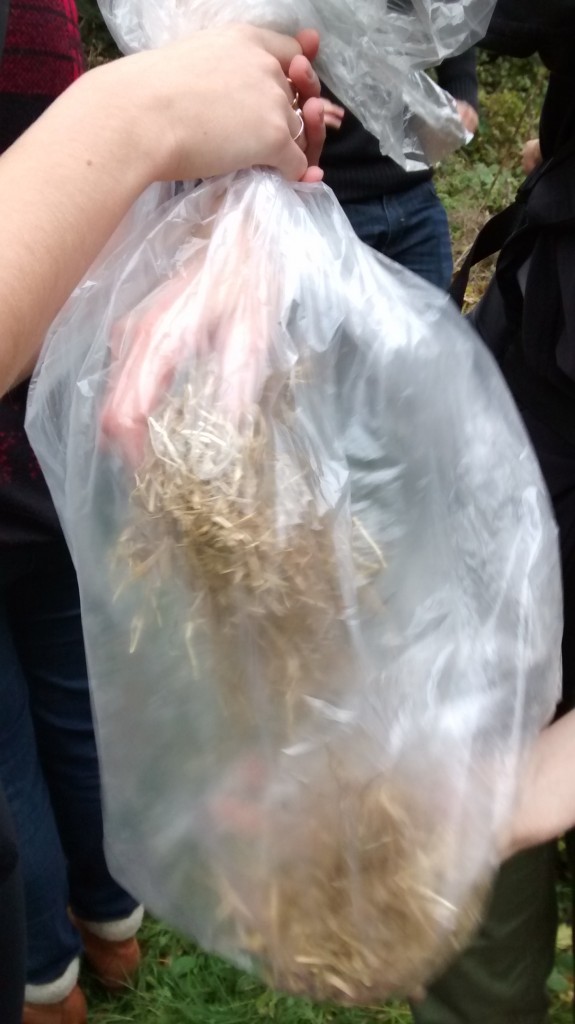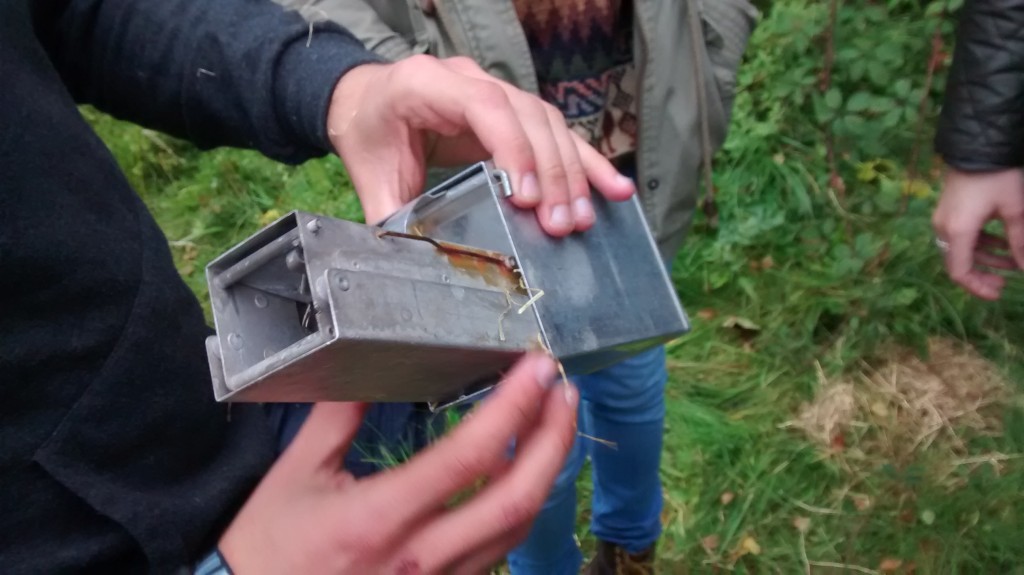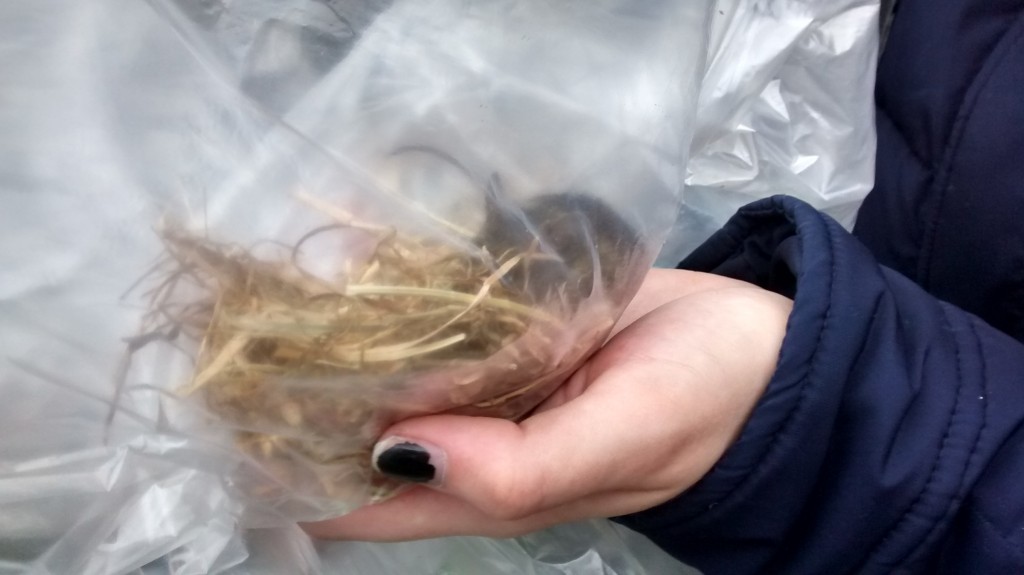At my new University, I’ve been trying out lots of different societies. Today I attended a small mammal trapping class with the Ecology Society. I’ve not done anything like this before, so it was quite interesting! The society members had set up the traps already (apparently they leave the traps out with the doors locked open/food in the day before trapping attempts to get the mammals used to grabbing food from them), so today we were checking the contents. 7 out of the 18 traps seemed to contain something. Although the traps had already been set for us, we still learned how to set the traps for future reference.
In these traps, the large boxy bit of the trap is filled with bedding straw/meal worms/bird seed. The mammal runs in through the thin bit, and touches a trigger which shuts the door behind it. We were told that it’s important to set the traps with the box at an angle so that it doesn’t fill with water if it rains. We were also told that it’s important to check the traps early in the morning after setting them. Mice and voles tend to be OK as they will eat the seeds and the meal worms, but shrews will only eat the meal worms. Shrews need to eat about 3x their body weight a day, and so it’s crucial to get them released ASAP so that they can feed more.
To avoid the loss of the contents of the trap, we emptied them in to sacks:

Although this can be done with one person, it seemed easier to have two: One to have an arm in the bag with the mammal, and the other to use both hands to hold the top of the bag tights to the other person’s arm to prevent escapes.
In the trap my group emptied, we had a field mouse (as did most, but there were two voles caught). These are more difficult to deal with than voles, as they tend to climb more. Once we had the mouse in the bag, it was time to try and catch it. To do this, we had to try and corner the mouse in the bag and then grab the scruff of it’s neck. This proved quite difficult as the mouse didn’t really want to be caught. Eventually we succeeded however.
The mouse was initially quite displeased by this, but it did seem to calm down as it began grooming itself.
We learned how to identify the gender of the mouse (ours was male) from looking at the genitals, and how to tell what animal it actually was (i.e. a mouse).
The groups with voles seemed to have easier times. Apparently voles are a lot less flighty, and so didn’t need to be held by their scruffs.
The vole seemed quite happy to sit in people’s hands. I was one of the few people that it didn’t poop on, thankfully. To me the vole and the mouse look quite similar, and so I asked how to tell the difference. Voles are generally stumpier than mice, having shorter furry tails compared to mice, which have long hairless tails. Voles have smaller feet/legs as they are designed to dig, whereas mice are designed to climb. The voles also have less pronounced ears, smaller eyes, and tend to have darker fur.
In all it was a fun thing to try out, and something that I’d like to do again! The Society also does activities such as bird ringing I’m told, which is something that I’d love to get involved with.






[…] Small Mammal Trapping […]